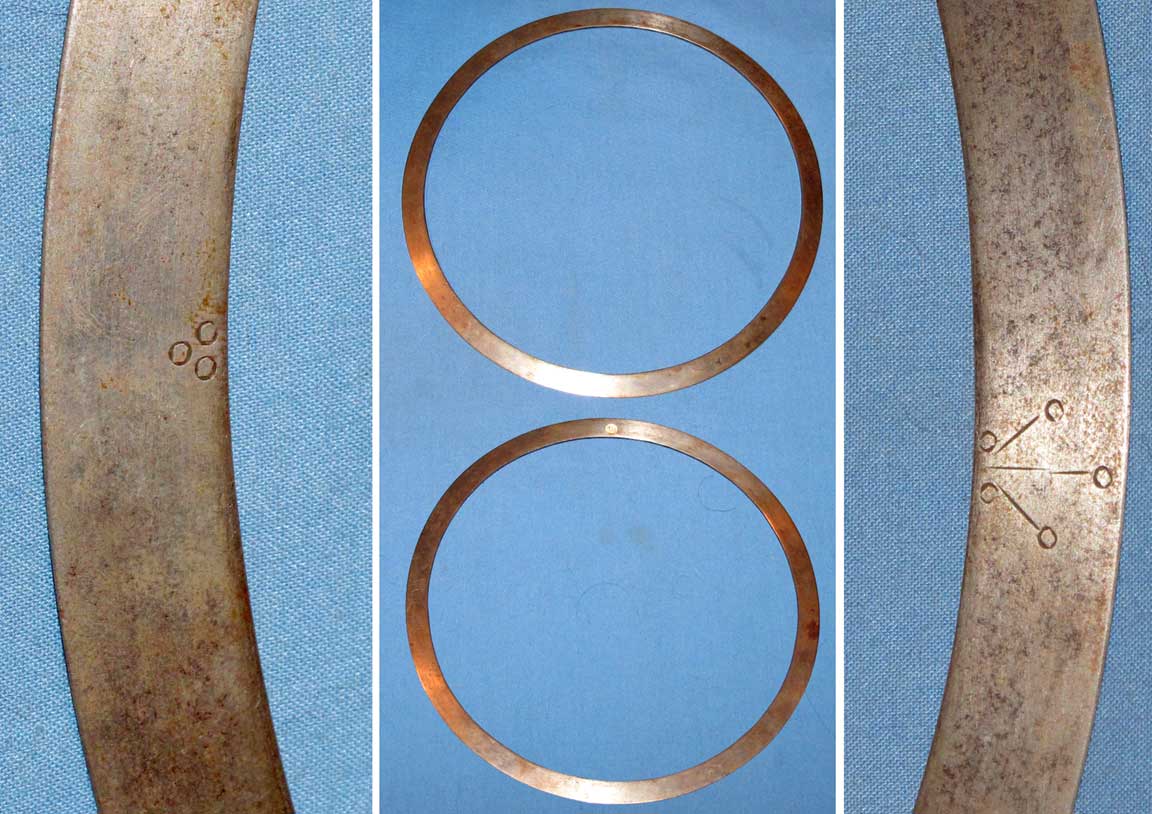Item A55
This Item was Sold on 2 September
2011 for $400
Similar artifacts for sale are often found on the Asian
Artifacts web page.
Historical Pricing information for this item and similar artifacts can be found at: Historical Artifact Prices.
|
The Indian throwing ring knife variously known as the Chakram, Chakra, Chackram, Chackrum, Chakar, Chakram Quoit, Quoit is one of the least understood of all weapons . Generally thought to be the exclusive provenance of the Sikhs, Egerton shows a broad bladed example of 6" diameter in his landmark 1880 study identified as Aboriginal and non-Aryan Tribes of Central Indian and the Andaman Islands. These generally are called the "Wild Tribes" and are known to have produced fine metal work in their weapons, particularly battle axes. Allowing for a broader use of the chakram, he describes the vast variation in construction and quality encountered. Furthermore, it seems quite likely that the Sikhs (founded in 1469) may have adapted the weapon from the refugees of the earlier Aryan invasion. Egerton also states that the arm that is exclusively peculiar to this sect (Sikhs) is the quoit, but he goes on to remove any doubt that it is a true weapon and used in battle. The Sikhs became martial under Guru Govind Singh and they used the Chackram effectively against the Moghul dynasty. The Chackram has a history that is as old as Indian civilization itself. It's useage is embedded in Indian myth and legend. In the epics . . . the Mahabharata for instance . . . an asura trying to get heavenly nectar from the moon had his head chakra-ed off. Still he tries to swallow the moon and succeeds ever so often before the moon escapes through the cut neck . . . an eclipse myth. Sculptures and paintings of many gods and godesses show the chakra being twirled. You can read more about the Chackram on my Chackram web page. This item is an old Chackram from India. It was purchased from an antiquity dealer - William Fagan & Company (currently called Fagan Arms) in the mid 1980s. William Fagan acquired it from an auction house in England. It was likely brought to England in the 19th or early 20th Century by an English soldier. The ring is made out of steel. The outer rim is machined to form a sharp outer edge and an airfoiled profile. The inner rim is blunt. There is light pitting and oxidation, but the surface is nearly smooth and it has a shiny metallic appearance. There are no large pits or major damage of any kind. This Chackram has one of the narrowest blades that I have seen on this kind of throwing knife. There are 2 pairs of manufacturer's marks on the upper surface. Each pair is separated by 180 degrees and the two pairs of marks are indexed apart by 90 degrees. Both sets of marks can be seen in the photo below. One set of marks has three small circles close together at the inner edge. The other set has 5 small circles and four lines to make a more complicated pattern. This Chakram is unlike the Chackram used by Xena Warrior Princess. It is not a plastic toy. I have thrown it several times in soft dry grass and it flies straight and true, but don't expect a long duration flight like an Aerobie. There is not a lot of lifting surface on metal Chakrum relative to their weight. |

How to Order | Back to: Asian Artifacts | Collectable Artifacts | Historical Artifact Prices | contact: Ted Bailey